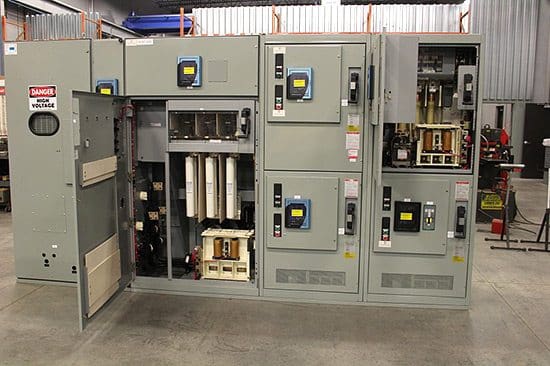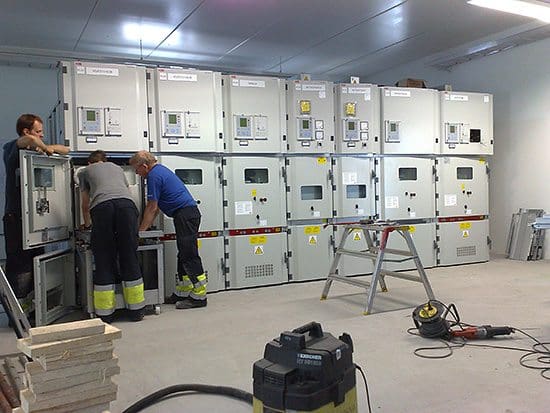
Matching the MV circuit breaker to the task
Many years of experience in developing both SF6 and vacuum medium-voltage circuit breakers has yielded up ample evidence that neither of the two technologies is generally better than the other, and especially that they are complementary from the application point of view.
Typical of such special applications is the switching of //
- Overhead lines and cables
- Dry-type transformers
- Small-size motors
- Capacitors
- Arc furnaces,
- Shunt reactors and
- Railway traction systems.
The need for ‘frequent switching’ or ‘soft switching’ can be an additional element influencing the choice. In such cases, a comprehensive study of the planned installation may be needed to find the best answer.
1. Overhead lines and cables
When applied to the onerous duty of switching and protecting overhead line distribution networks, in which the fault currents are distributed over the whole current range, both technologies provide adequate margins over and above the maximum required by the relevant standards and in normal service practice.

Go back to Special Applications ↑
2. Transformers
Modern vacuum MV circuit breakers as well as SF6 circuit breakers are suitable for switching the magnetizing currents of unloaded transformers with overvoltages lower than 3.0 pu. In special cases, for instance when vacuum circuit-breakers are used for switching dry-type transformers in industrial installations, the use of surge arresters is to be recommended.

Go back to Special Applications ↑
3. Small-Size Motors
When choosing MV circuit breaker for motor-switching duty, attention should be paid to the problems of overvoltages during operation.
The target limit for overvoltages of less than 2.5 pu is obtainable with both technologies. Where vacuum MV circuit breakers are used for switching small motors (starting currents less than 600 A), measures may be necessary to limit overvoltages due to multiple re-ignitions.
However, the probability of this phenomenon arising is low.

Go back to Special Applications ↑
4. Capacitor banks
Both technologies are suitable for restrike-free switching of capacitor banks. When capacitors must be switched back-to-back, reactors may be necessary to limit the inrush currents. The synchronous control of MV circuit breakers is an effective solution to this problem.
SF6 is specifically recommended for applications with rated voltages higher than 27 kV.

Go back to Special Applications ↑
5. Arc furnaces
Arc furnace switching is often characterized by frequent operation at high current values and short intervals. Vacuum circuit breakers are particularly suited to these service conditions.

Go back to Special Applications ↑
6. Shunt reactors
SF6 circuit breakers are suitable for switching with overvoltages generally lower than 2.5 pu. Where vacuum circuit breakers are employed, it may be necessary under certain circumstances to take additional measures to limit overvoltages.

Go back to Special Applications ↑
7. Railway traction
In principle, both interrupting technologies are well suited for this duty. However, in the case of low-frequency applications (eg, 16.67 Hz), vacuum circuit breakers are to be recommended.

Go back to Special Applications ↑
Reference // SF6 or Vacuum MV Circuit Breaker? – Guenter Leonhardt, Mauro Marchi, Giandomenico Rivetti at ABB (Download)